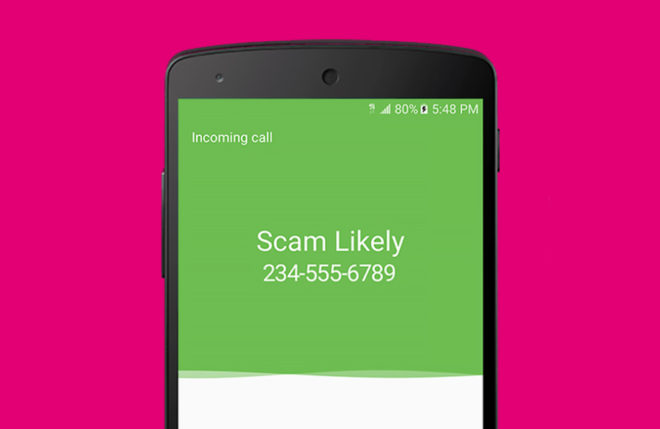
T-Mobile is working to beef up its scam protection offerings.
T-Mobile today announced that it’s improving its Scam ID and Scam Block features by integrating new spoof identification tech at the network level. These improvements aim to analyze network data to pinpoint and identify the origin of a call before it reaches your phone to help fight the neighboor spoofing method of scam calling.
A popular scam call technique is to temporarily spoof or hijack a phone number with an area code and three-digit prefix of the person they’re trying to scam, making the incoming call look more familiar and increasing the chance that the person being targeted will answer. STIR and SHAKEN aim to fight that issue, and this week FCC Chairman Ajit Pai sent letters to the U.S. carriers urging them to make plans to adopt these technologies without delay.
T-Mo said today that it’s ready to adopt STIR (Secure Telephony Identity Revisited) and SHAKEN (Secure Handling of Asserted information using toKENs) standards. With these technologies, calls traveling through interconnected phone networks can be signed as legitimate by originating carriers and validated by other operaters before the calls reach consumers. STIR and SHAKEN digitally validate the handoff of calls, allowing the consumer’s carrier to verify that an incoming call is from the person supposedly making it.
Rounding out today’s announcements is an update on how T-Mobile’s Scam ID and Scam Block features have been performing for consumers. T-Mo first deployed Scam ID and Scam Block in early 2017, and T-Mobile says that in the past 18 months, it’s tagged over 6 billion calls as likely scams and blocked more than 1 billion scam calls. Scam ID can compare the phone number of an incoming call against a global database of known scammer phone numbers, and if a match is found, you’ll be warned. Scam Block is a feature that, when enabled, will prevent calls identified as scams from ever reaching your phone.
Source: T-Mobile
